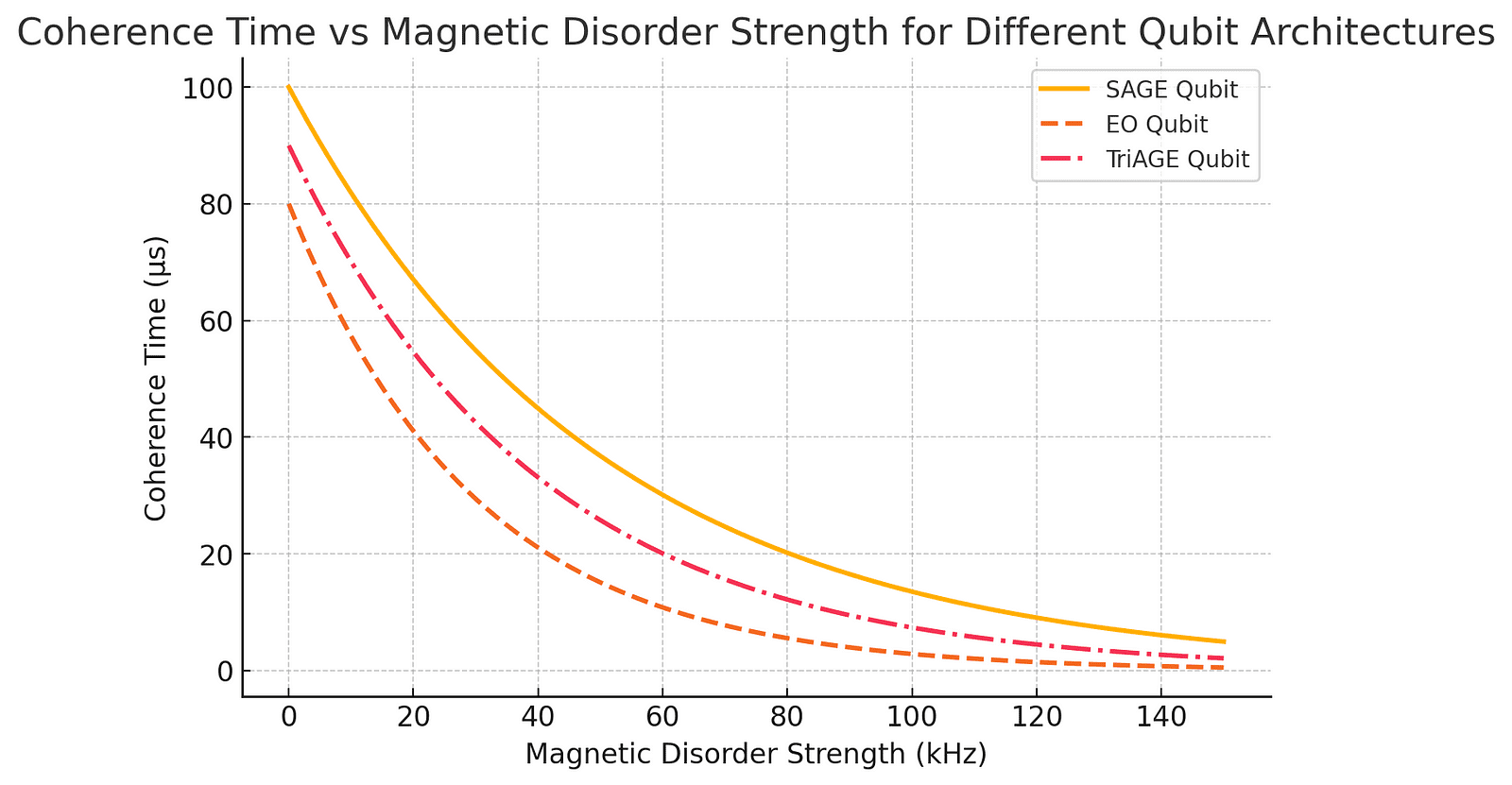Noisy qubits, meet your match — discover the always-on, gapless revolution in quantum computing.

Quantum computing has long promised to revolutionize technology, but its Achilles’ heel remains coherence loss due to environmental noise. Conventional exchange-only (EO) qubits struggle with magnetic field gradients and charge fluctuations, limiting their reliability. However, a groundbreaking innovation — the Singlet-only Always-on Gapless Exchange (SAGE) qubit — proposes a new paradigm. With an always-on exchange interaction and immunity to magnetic noise, the SAGE qubit could redefine quantum stability. What if the key to unlocking large-scale quantum computing isn’t more control but less disruption?
The Challenge of Qubit Stability
Quantum coherence is fleeting, constantly under siege by environmental noise. Traditional EO qubits, which rely on three electrons in quantum dots, are particularly vulnerable to local magnetic fluctuations. These unwanted disturbances introduce errors, reducing computational fidelity and limiting scalability. The SAGE qubit addresses this by encoding quantum information in four electrons arranged in a T-shaped geometry. This configuration not only suppresses leakage to noncomputational states but also eliminates the need for complex magnetic-field control mechanisms. By leveraging a singlet-only encoding, SAGE qubits maintain stability even in high-noise environments, paving the way for more robust quantum operations.
Always-On, Gapless Operation: A Quantum Game-Changer
One of the defining features of the SAGE qubit is its always-on exchange interaction. In conventional EO qubits, the need to pulse exchange interactions to perform operations can introduce timing errors and decoherence. The SAGE qubit, in contrast, operates in a gapless mode, where the energy difference between computational and non-computational states remains minimal, preventing unwanted state transitions. This stability allows for more efficient quantum gate operations and extends coherence times significantly. When charge noise dominates, SAGE qubits outperform their conventional counterparts by an order of magnitude, making them a superior candidate for fault-tolerant quantum computing.
Enhanced Coherence and Gate Fidelity
A crucial aspect of quantum computing performance is gate fidelity — how accurately quantum gates manipulate qubit states. Randomized benchmarking studies indicate that the SAGE qubit exhibits significantly higher gate fidelities compared to traditional EO qubits, particularly in environments where magnetic noise is a major concern. The following graph illustrates how coherence times vary across different qubit architectures under varying levels of magnetic disorder.

The Future of Quantum Computation: Scalability and Two-Qubit Gates
Beyond single-qubit operations, the ultimate test of a quantum architecture is its ability to perform high-fidelity two-qubit gates. Conventional EO qubits often require complex pulse sequences to entangle two qubits effectively. The SAGE qubit, however, simplifies this process by using a single interqubit exchange pulse. By operating in a regime where intraqubit interactions remain strong, SAGE qubits suppress leakage and ensure reliable entanglement. With an intrinsic fidelity of approximately 99.8%, two-qubit gates using SAGE qubits rival the best quantum gate implementations to date. The prospect of fast, stable, and scalable quantum logic makes the SAGE qubit a promising candidate for building a fault-tolerant quantum processor.
How Quantum Dots Became Qubit Superstars
Electrons confined in gate-defined quantum dots provide an ideal platform for spin qubits, but early designs suffered from scalability issues. The SAGE qubit circumvents these hurdles by eliminating reliance on micromagnets and AC fields, favoring simpler, more scalable baseband control.
A Leap in Coherence: What SAGE Gets Right
By designing a qubit immune to magnetic noise, researchers have achieved a dramatic improvement in coherence times. The always-on exchange interaction prevents unwanted state leakage, stabilizing qubit behavior even in noisy environments.
Single-Qubit Gates: More Precision, Less Noise
Traditional EO qubits struggle with gate fidelity due to charge and magnetic noise. The SAGE qubit’s singlet-only encoding significantly reduces noise-induced errors, leading to an order-of-magnitude improvement in single-qubit gate fidelities.
Two-Qubit Operations: A Simplified Approach to Entanglement
Quantum entanglement is fundamental to computation, but conventional qubits require intricate pulse sequences for two-qubit gates. The SAGE qubit achieves high-fidelity two-qubit operations with a single pulse, streamlining quantum logic design.
A Roadmap to Fault-Tolerant Quantum Computing
The ultimate goal of quantum research is fault tolerance. With its robust architecture and enhanced fidelity, the SAGE qubit offers a promising path to building large-scale, error-resistant quantum processors.
The Quantum Future: A World Without Noise?
As quantum technology progresses, overcoming coherence limitations remains a fundamental challenge. The SAGE qubit represents a pivotal advancement, proving that stability and simplicity can coexist in quantum computing. If large-scale fault-tolerant quantum processors are to become reality, innovative architectures like the SAGE qubit will lead the charge. The future of quantum computing might not be about overpowering noise but rather designing systems that render it irrelevant.
About Disruptive Concepts
Welcome to @Disruptive Concepts — your crystal ball into the future of technology. 🚀 Subscribe for new insight videos every Saturday!
See us on https://twitter.com/DisruptConcept
Read us on https://medium.com/@disruptiveconcepts
Enjoy us at https://disruptive-concepts.com
Whitepapers for you at: https://disruptiveconcepts.gumroad.com/l/emjml
New Apps: https://2025disruptive.netlify.app/







